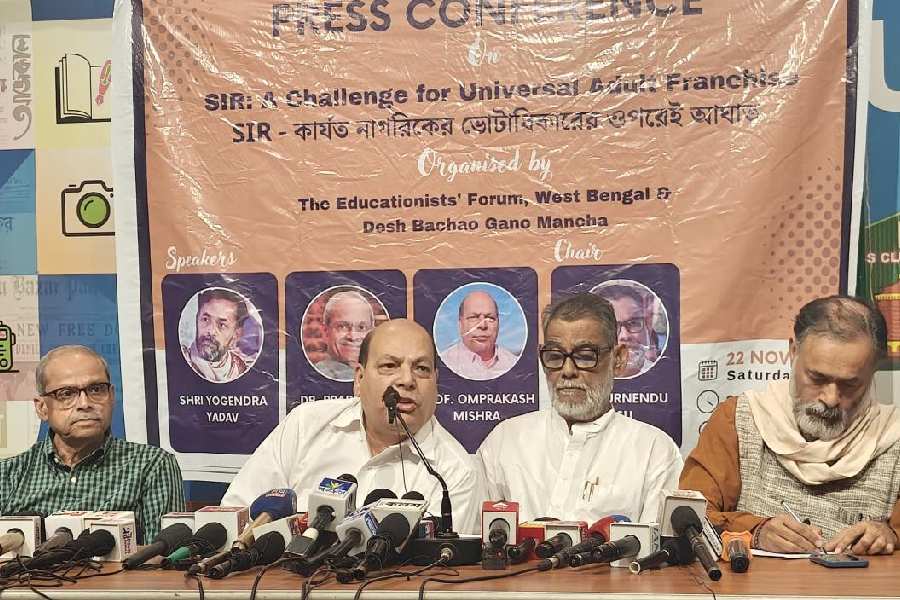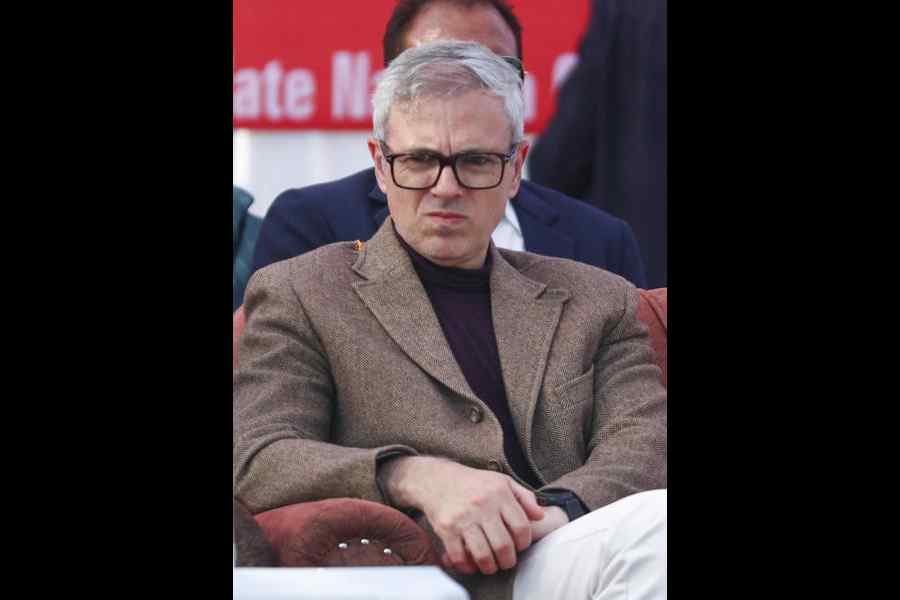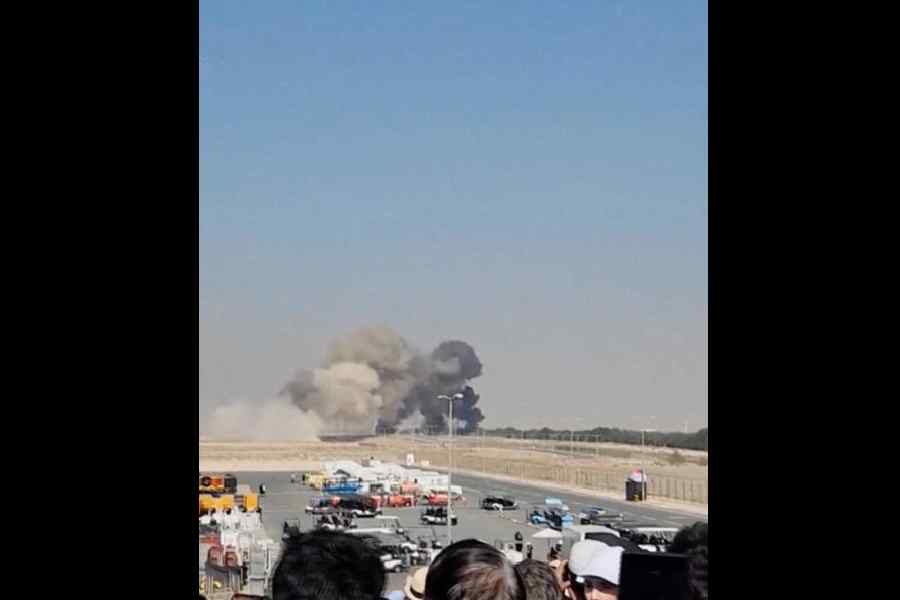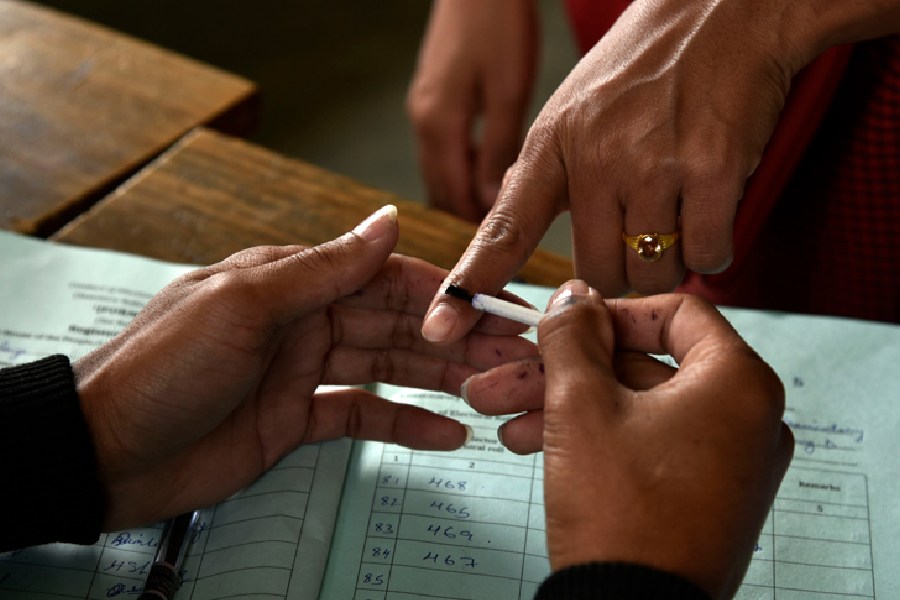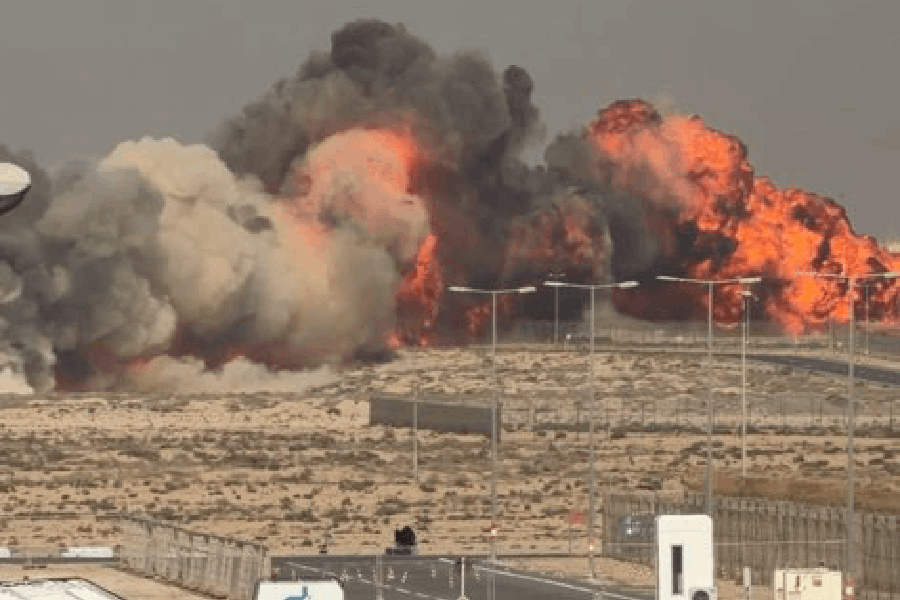There is scarcely a country in Asia without a Donetsk or a Luhansk yearning to throw off the central authority and find its own niche in the sun. Nor is there any dearth of precariously positioned nations like Cuba, Venezuela, Nicaragua and Syria to curry favour with ruthless victors by following their lead. Aspirants for independence like the Georgian provinces of South Ossetia and Abkhazia, which have also recognized Ukraine’s two breakaway republics, probably hope that someone will in turn reciprocate the favour.
India needs to be careful in all this horse-trading and tightrope walking as Vladimir Putin invokes nuclear power to undo Mikhail Gorbachev’s handiwork and push back history. Trying to prevent a special session of the United Nations General Assembly to discuss the crisis is hardly the way to ensuring that Ukraine’s ambassador there will jump up from his seat to embrace India’s representative as he did Singapore’s. It would have been different if India had been prepared to confront the United States of America over NATO’s eastward march and the coup that toppled Ukraine’s democratically elected president but such candour isn’t India’s diplomatic style. Meanwhile, the tragic death of a 21-year-old medical student from Karnataka and the uncertain fate of other stranded young Indians warn of bigger dangers ahead. No one is inclined to listen to India’s pieties about ‘dialogue and diplomacy’. The plain truth is that whether or not Jawaharlal Nehru’s India leveraged some magic morality, today’s India pulls little weight in international affairs. It hasn’t for a long time, explaining Indira Gandhi’s reluctance publicly to demand a Soviet withdrawal from Afghanistan. India’s ambivalence in 2014 when 100 UN members condemned Russia’s seizure of the Crimea drew comparisons with the absorption of Sikkim.
India’s global decline into little more than a second-class adjunct of the Quad created and led by the US is markedly noticeable in tiny Singapore which, too, plays both sides but with a panache which is airily described as being ‘brutally into realpolitik’. When the US sought an alternative to the Subic Bay base in the Philippines, Lee Kuan Yew, father of modern Singapore, promptly offered facilities and logistical support. There were reports of similar privileges being offered to Moscow. Although Lee vehemently denied this in an interview with me, suggesting the offer was really a bargaining gambit, Singapore-Soviet relations were far from frosty. Singapore continued to welcome Soviet ships at its repairing docks all through the Cold War and especially during Vietnam’s invasion and occupation of Cambodia. Far from being the capitalist-roader of the Left’s imagination, Lee allowed Aeroflot, Tass, Novosti and the Moscow Narodny Bank to operate in his island. There was even a joint fishing venture with the Soviets whose fleet trawled the Pacific and Indian oceans. “We canned the fish and repaired their trawlers. Their sailors would pass through and there were a few shops with Russian language signs.” At the same time, the US and Japan pumped money into Singapore, trained managers, provided technical expertise and helped to build up today’s dynamic economy.
Singapore could pull it off because mercantilism is its principal raison d’etre. India’s demographic mix, chequered history, the twelve hundred years of servitude that Narendra Modi has made famous, harsh economic disparities, and festering grievances make for too many potential pockets of rebellion to be complacent about secession. I am not thinking only of major separatist movements like Nagaland, Mizoram or Khalistan. Nor of discontent in places like Junagadh, Hyderabad and Kashmir. Current politics confirm that India’s unity may not be wholly consensual. The flaws in our past affect the present and can shape the future. A report I chanced upon only two months ago recalled a rebellion that flared up in 1831. The East India Company suppressed it but its rumbling echoes could be heard again in the 1980s.
The new report was of 17 men being arrested for sedition while recruiting for the shadowy, long defunct entity called ‘Kolhan Separate Estate’. In another — more romantic — age, they might have been hailed as valiant freedom-fighters who used bows and arrows to defend their ancient rights. In one sense, they were relics of the rebellion by restive Kols who watched despairingly as better organized Hindu, Sikh and Muslim settlers usurped their lands, confiscated their livestock, imposed crippling fines and sometimes forced them to labour without wages. The men who sought my newspaper’s support in the 1980s did not mention the Kol revolt. They spoke instead of the sacrilege of contemporary administrators riding roughshod over what they called Wilkinson’s Rule framed by Thomas Wilkinson, agent of the British governor-general who organized the governance of an autonomous Chota Nagpur in 1837. The virtually unknown Wilkinson appeared to have been deified in the tribal memory as in one of Kipling’s stories. Petitions about the dishonour to his memory were sent (and ignored) to the British high commissioner in New Delhi and to Queen Elizabeth in London.
I forgot all about Wilkinson, Kolhan and its Kols until I read some five years ago that Wilkinson’s Rule had again reared its mysterious head, this time under the improbable aegis of an 83-year-old retired official called Ramo Birua who had hoisted the flag of the Kolhan Separate Estate. No fewer than 43 of his supporters were reportedly booked for sedition and criminal conspiracy, but the octogenarian leader had disappeared. I don’t know if he figured in the January confrontation but, clearly, some kind of cause lingers on to inspire rebellion. The saving grace is that it is too small and unimportant (one of Jharkhand’s five divisions with a population of under five million) to arouse the interest of malign outsiders like Pakistan in Kashmir or China in Nagaland.
There are roughly 100 such mostly self-declared entities around the world, many with fancy names and pretensions like the Islands of Refreshment, the Grand Duchy of Flandrensis, Aerican Empire, Kingdom of EnenKio, Conch Republic, and Celestia which claims to flourish somewhere in Space. About a third of them are or were in Australia where ‘His Majesty Prince Leonard I of Hutt’ and his son and heir, Prince Graeme, reigned over an unrecognized 75-sq-km principality north of Perth with a population of 23. Prince Leonard designed his own medal-covered royal cloak, declared war on Australia in 1977, and a few days later claimed for his principality the full respect due under the Geneva Treaty Convention to a nation undefeated in war. During its 50 years, Hutt issued postage stamps, currency and passports.
The only nation of the mind to arouse fears of international conflict was the Free Territory of Freedomland in the Spratly Islands from 1956 to 1974. Its provocative name did not then invite a sharp and swift reprisal from Beijing. Instead, it was the former Philippine president, Ferdinand Marcos, who forced Tomás Arbolente Cloma, the Filipino lawyer and businessman who founded Freedomland, to sign over to Manila the rights he claimed over the islands. However, the rough treatment Cloma also received from the Taiwanese confirmed that when it comes to territory (Tibet, for instance), there is nothing to choose between Taiwan and China, which eventually seized the islands and snuffed out Freedomland’s freedom.
Possession being nine-tenths of the law, China sees no need to bother with irrelevancies like legal niceties. In Europe, too, it supports Russia’s invasion of Ukraine. Sadly, a nation that prides itself on being the world’s largest democracy is also a party to this murder of the new world order that the end of history had supposedly ushered in and a return to the legalized law of the jungle symbolized by what historians called the grab for Africa. India may learn to its cost that its action opens the way for foreign intervention in all secessionist uprisings.


